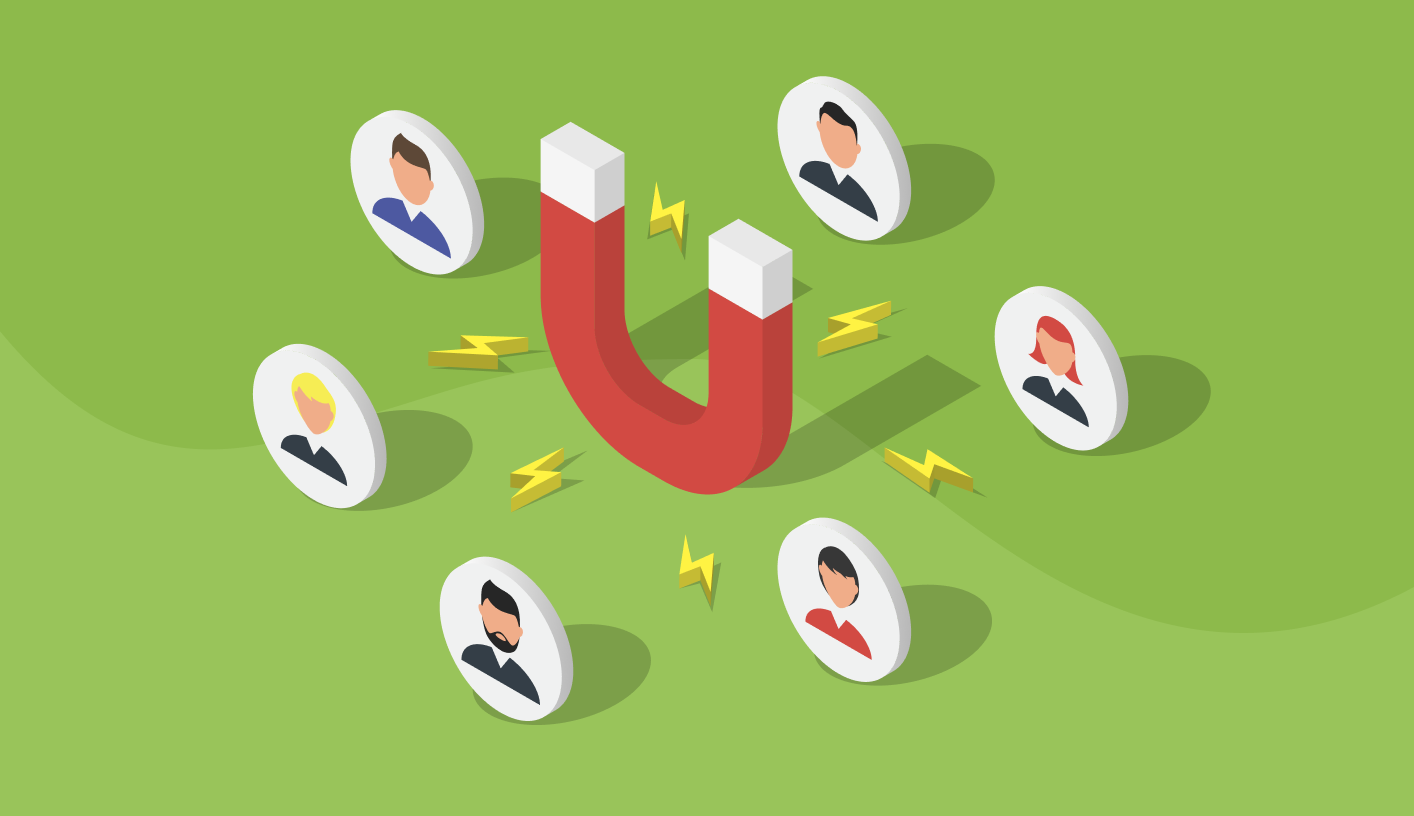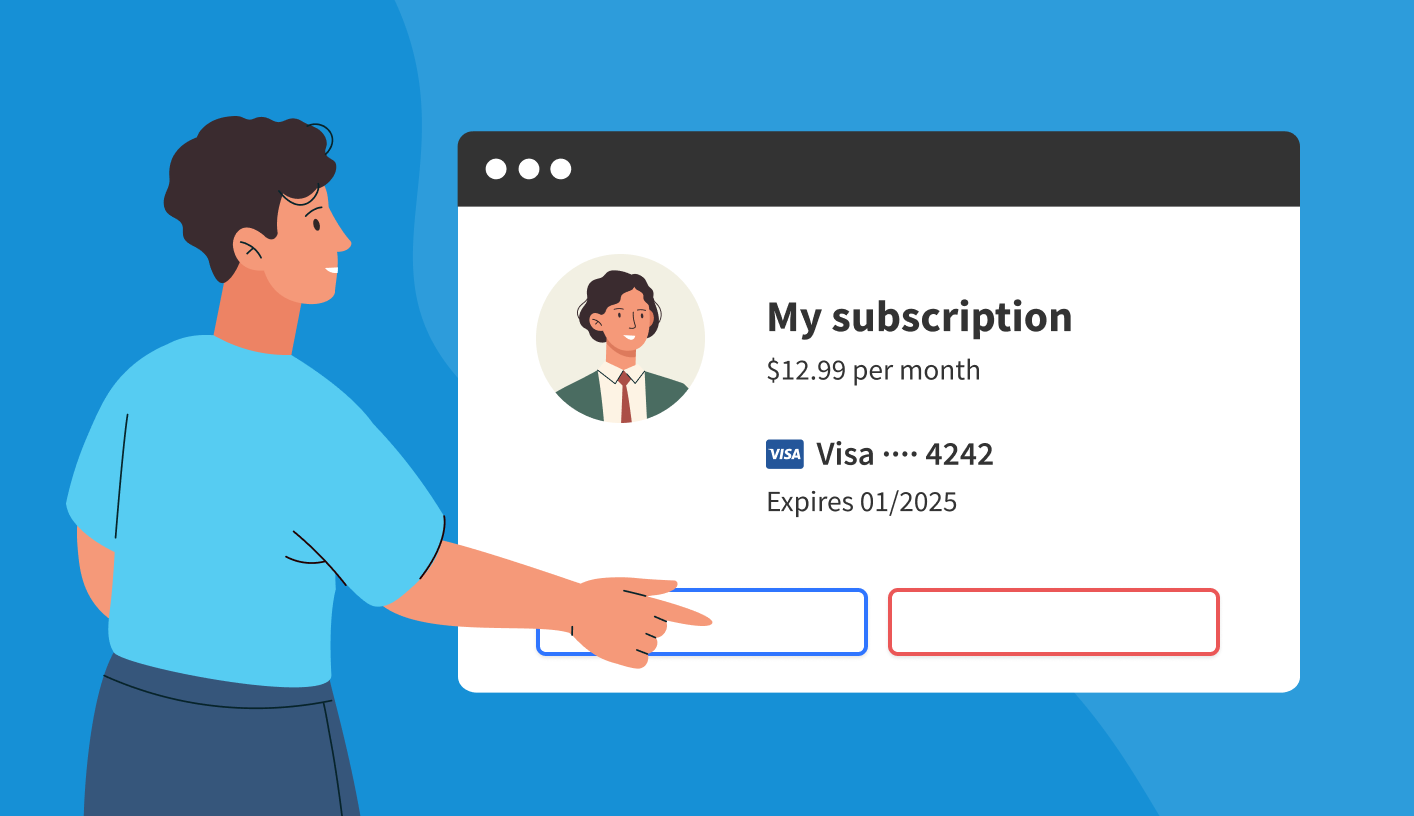User Offboarding - Reduce Churn with These Expert Tips

User offboarding is the process a customer goes through to cancel or deactivate an account. Offboarding is the business’s final chance to save the customer, collect feedback and leave a lasting, positive impression.
In SaaS and other subscription-based businesses, user offboarding often doesn’t get the level of attention given to onboarding. That’s a mistake.
While it may seem like there’s little business value in providing a quality offboarding experience, there’s actually quite a lot to be gained. Offboarding isn’t always goodbye—there’s significant potential (as much as 39% in our data) to address the customer’s reasons for leaving and retain them.

But even if they continue with cancellation, it’s an opportunity for your business to maintain a positive relationship, gather valuable feedback, and leave open the possibility of winning back the customer in the future.
This post covers everything you need to know to design a positive customer offboarding experience that maximizes retention and winbacks, while maintaining brand reputation and regulatory compliance.
What is user offboarding?
User offboarding refers to the process a customer goes through to cancel a subscription or delete/deactivate an account. This may involve a phone call, email, chat or an online/in-app cancellation flow. Regardless of the method, offboarding is an opportunity for businesses to make a final positive impression, collect feedback from churning users, attempt to address pain points and hopefully “save” the customer.
Whether facilitating cancellation or deletion, offboarding is more or less the same. The key difference between the two is that cancellation usually retains the customer’s data and often the user can continue to use the service on a free plan. Deletion means removing all personal user information, user-generated content, etc.
Why is offboarding important?
Here are four reasons your business shouldn’t neglect the customer offboarding experience:
Final impressions matter. According to the work of psychologist Daniel Kahneman, people tend to judge experiences on how they feel at two key points: the “peak” (most intense or engaging moment) and the end (ie. offboarding in our context). A bad final experience can solidify the negative in a customer's mind. So keep it positive—it’ll increase the likelihood of a customer returning, referring others and spreading positive word of mouth.
Offboarding is an opportunity to solve problems and retain customers. With targeted deflections and offers, like coupons and pauses, businesses can prevent 10-39% of cancellations.
There’s tremendous value in honest feedback. A cancellation survey can surface actionable insights for customer-facing teams, revealing the root causes of churn and helping you make data-driven decisions about product development, pricing and messaging.
This may not be the end. There’s a tendency to consider churning customers as lost forever, but as many as 30% of customers who cancel may reactivate down the road. The fact is, customers leave for a variety of reasons, some of which have little to do with the utility of your product, and these customers may have a need for your product again in the future. A thoughtful offboarding experience sets the stage for your winback campaigns.
Customer offboarding procedures vary. The most common are:
Call to cancel - Customers hate it, but some businesses believe the extra friction increases revenue and offers a chance to hard-sell on keeping the customer. For online businesses, call-to-cancel policies are increasingly coming under legal attack.
Email - Perhaps the easiest to set up. Downside, there’s little opportunity to save a customer. For online businesses that need to comply with California law and similar regulations, this is a viable option, though increasingly less so.
Chat - Like phone and email, there’s the potential support burden of manually processing cancellations, although chatbots can automate this.
Offboarding flow - web-based or in-app cancellation flows offer a great balance of usability, simplicity, cost-effectiveness and legal compliance.
This post largely focuses on web- and app-based offboarding flows, but most of the points are broadly applicable to any method of offboarding.
The perfect user offboarding experience
A great customer offboarding experience strikes the balance between business interest and user interest. It should be simple and relatively frictionless, while still leveraging this last chance to gather valuable feedback and attempt to retain the customer.
In summary, the best offboarding procedures adhere to these six principles:
Show humanity - Treat your users right. Make offboarding easy and transparent—it’s good for consumers and business.
Stick to the medium - If a customer can sign up online, let them cancel online.
Ask for feedback - There’s a lot to learn from churning customers. Responses help improve customer retention over the long term, not to mention allowing for targeted incentives to prevent cancellation and winback campaigns.
Reinforce value - Take this last chance to highlight your product benefits and remind users of the value they’re getting out of it. Some will reconsider cancellation.
Provide alternatives to cancellation - This may be your last chance to provide a solution to a customer’s problem. Get creative with support options, persuasive discounts and other incentives.
Provide confirmation - Clearly acknowledge cancellation in a retainable format, e.g. email.
Let’s consider each of these in detail.
Show humanity
Some businesses make cancellation difficult. While cumbersome offboarding procedures may generate some measure of retention, they certainly don’t create brand advocacy, trust or loyalty. Making cancellation difficult really just delays the inevitable, frustrates customers and harms your brand—not to mention some of these practices are illegal nationally and at the state level.
In its suit against Amazon for alleged violations of federal regulations, the FTC cited internal documents at the ecommerce giant which described the offboarding process for Prime as the “Iliad flow,” in reference to the length of the epic Greek poem.
Don’t make your offboarding experience a gauntlet that frustrates customers. It only hurts you in the long run. According to the White House Office of Consumer Affairs, the average unhappy customer will tell 9-15 people about their experience; 13% tell more than 20 people. So keep it positive!
In October 2024 the FTC finalized its “click to cancel” rule, which requires businesses to provide simple cancellation procedures. It specifies that cancellation must be “at least as easy” as signup. Some states, like California, have laws that go above and beyond the nation-wide requirements. (See our comprehensive compliance guide to learn more.)
The good news for subscription-based business: transparent, consumer-friendly practices are great for business. Make your user offboarding experience simple and straightforward. Bonus points if you’re playful about it, creating a final experience of levity, like Spotify does with their parting playlist.

Stick to the medium
Allow users to cancel in the same place they signed up, e.g. your website or app. Again, it’s about treating your users right—and it’s also required by various regulations.
Federally, the FTC enforcement police requires that cancellation be available in the same medium (e.g. website or mobile app) the consumer used to sign up, effectively ending call-to-cancel policies.
At the state level, Florida and Idaho require businesses to allow consumers to cancel via the “same means” as they used to sign up. California law stipulates that for consumers who signed up online, businesses must provide an option to cancel online (e.g. offboarding flow or a pre-formatted email).
While it may sound counterintuitive, offering customers easy offboarding options can actually be good for business. Here are the top five reasons:
Automate customer retention at scale. With powerful segmentation, targeted offers and personalized deflections that can be tested and optimized, offboarding flows can reduce churn 10-39%.
Customers prefer it. When possible today’s customers will choose user-friendly products and services, and avoid those perceived as draconian. Think cable companies.
It leaves a positive last impression. Meaning improved word of mouth and a higher chance of winning back the customer in the future. The reality is, many customers will be in the market for your product or service down the road, so don’t leave them with a bad taste in their mouth.
It’s cost effective. The administrative cost of processing cancellations by phone or email can really add up. With cancellation flows, the ROI is crystal clear.
It puts focus on improvement. Instead of milking your customer with coercive tactics, you’ll have to truly deliver exceptional value and outdo the competition. It makes you better.

Ask for feedback
Your offboarding experience is one of the critical places to collect user feedback, providing a rich source of data for customer churn analysis, roadmap decisions, marketing, sales, budgeting and more, which all add up to improved customer satisfaction and retention. Additionally, survey responses can be used to target personalized retention offers and launch winback campaigns.
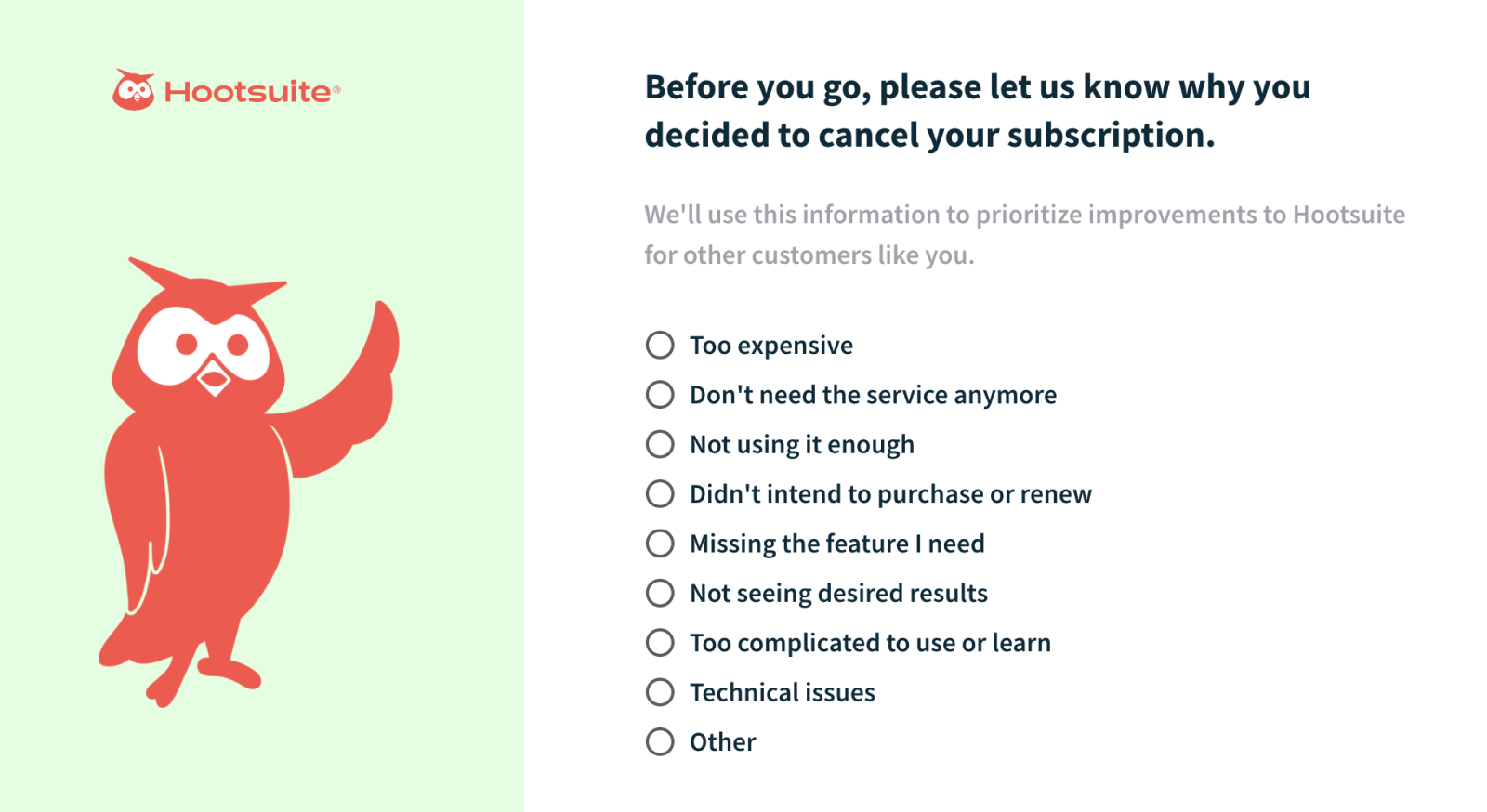
You may have a lot of questions on your mind, but there’s a balance to strike between ease of use and completeness. Yes, you want to encourage customers to share detailed feedback (it’s essential data for your team) but you also want to make your exit survey frictionless—just a few clicks.
We recommend two key questions:
“What is your primary reason for leaving?” - Make this question multiple choice for your customer’s ease of answering—you’ll get more data and be able to see a high-level overview with aggregation. Consider adding an “Other” option with a free-form text box.
“How can we improve?” - Keep this open-ended. While not every customer will take the time to answer, you will get some meaty responses.
For much more detail on designing your churn survey, check out this post:
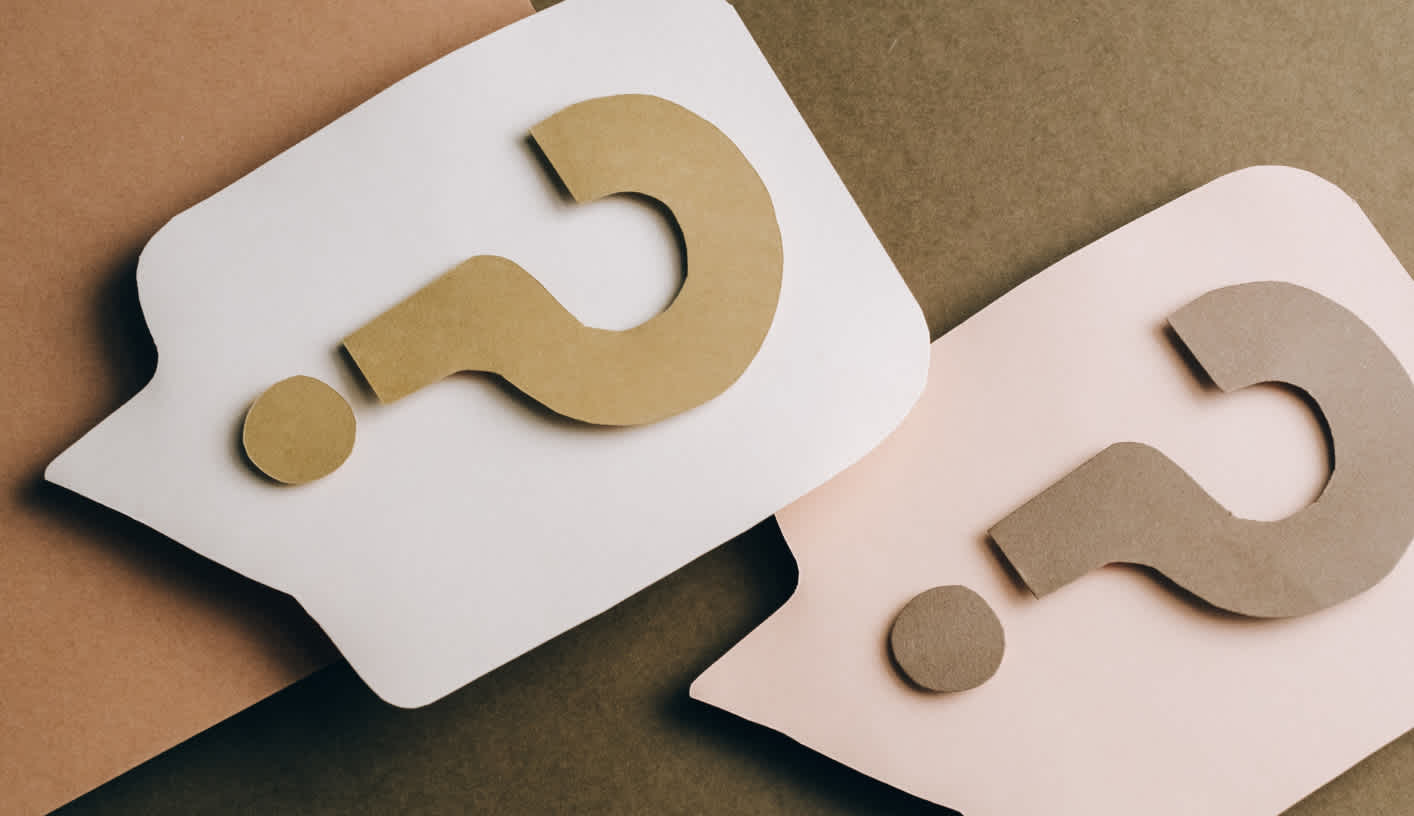
Reinforce value
Reminding customers of your product’s value is an effective way to prompt some customers to reconsider cancellation. You can accomplish this with an account summary or acknowledgements.
Account summary
An account summary is a personalized reminder of the value a customer receives from your product or service. It should contain specific, quantifiable, personal usage metrics such as the number of contacts in a CRM.

It may also include more generic value statements such as “99.999% uptime” or “top-notch customer service.”
The goal is to bring to consciousness the real value your product has delivered to your customer.
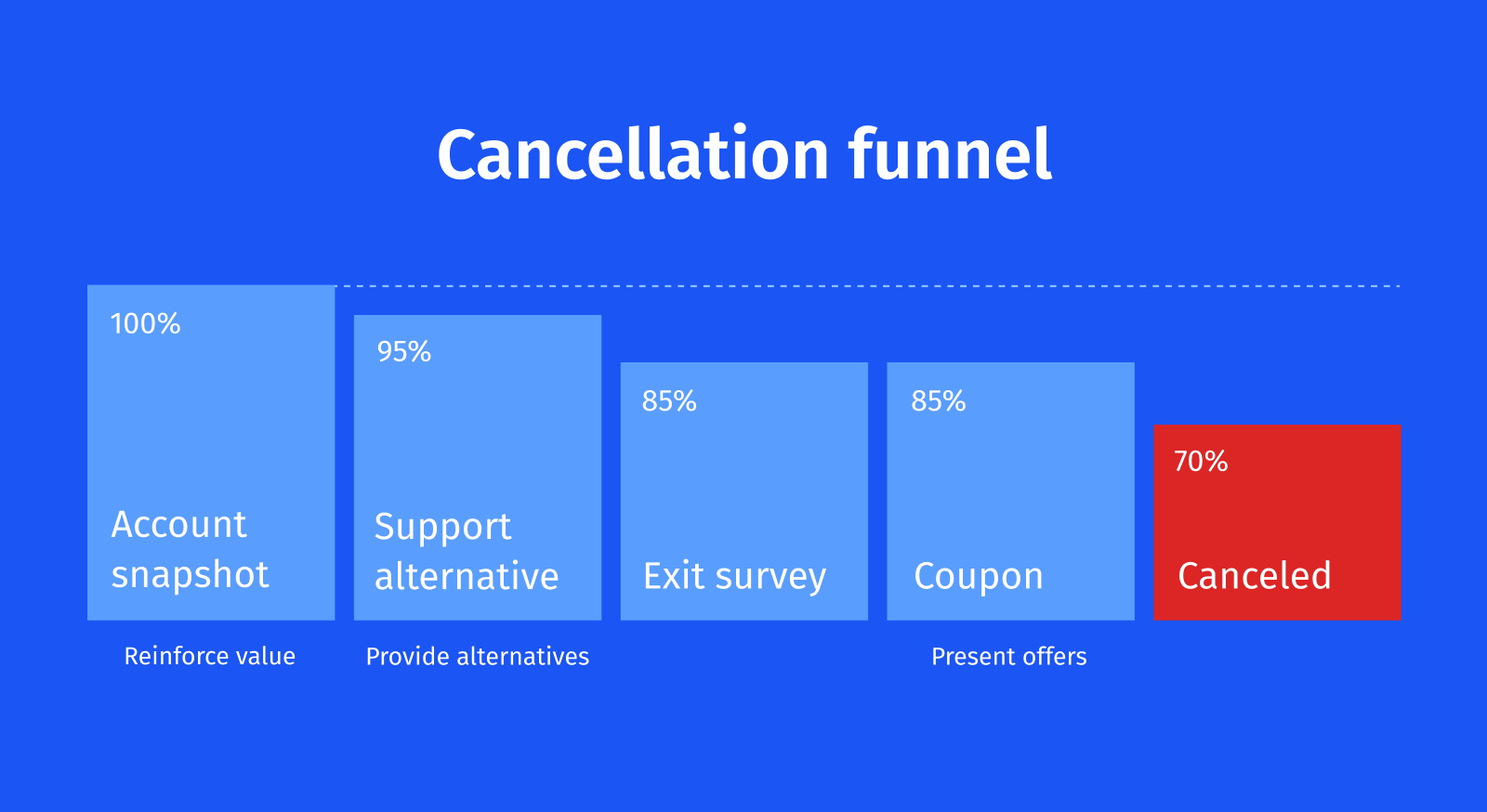
Acknowledgements
Acknowledgements are statements the customer must accept before completing offboarding.
Like an account summary, these statements should highlight what will be lost if the customer cancels, for example:
Data that will be lost
Access to a “grandfathered” plan that will no longer be available
Days of the subscription that will be surrendered (if cancellation is effective immediately)
Provide alternatives to cancellation
User offboarding is your final chance to hold onto your customer. Make an effort to address pain points and changing needs. Perhaps escalated support (e.g. a free consult or Calendly link) will be effective. Pausing an account or downgrading to a free plan will maintain the relationship.
Offers, such as a discount or plan upgrade, can entice customers to stick around. The secret to making a compelling offer – target them based on how customers answer survey questions. For example, you may want to offer a discount to customers who say the product was “too expensive” and a free support upgrade to those that had difficulty using the product. With ProsperStack Retain, you can also target offers based on customer data from your CRM, CDP or other integrations.

Support materials
In some cases you lose customers not because you lack features but because they couldn't figure out how to accomplish their objectives.
Make one last attempt to help them solve their issues with links to your knowledge base or easy options to connect with support representatives via phone or chat.
Pause the account
Some customers come and go. A temporary pause of the account is a great alternative to cancellation. Use your customer exit survey to identify which customers will be most likely to accept a pause.
Make sure your pause option is for a fixed time, usually 3-6 months, otherwise you may never see those customers again. The goal is to keep customers engaged, not invent a new euphemism for cancellation!
Transition to free
Consider offering a basic free plan that can keep the customer connection alive.
Coupon
Many customers who go to cancel can be persuaded to stay at the right price. To be effective, discounts typically need to provide savings of 25-50% for 3-6 months.
Plan change
A plan change can provide the customer with extra value, whether that be more features, storage or support. Consider upgrading the customer to a higher offering at no extra charge.

Or, if you have a large suite of products, you could promote an alternative that might better fit their needs.
Extend trial
Give customers an extension of the free trial period so they have more time to explore the product and find value.
Saving a customer is great, but your job isn't done when they accept the offer. You kept them around, but you probably haven't solved the core issue that caused them to consider cancellation in the first place. Categorize these customers as "at risk" and reach out to them.
Want more? We cover everything you need to know about offboarding flows in great detail:

Provide confirmation
Make it clear that the subscription has been canceled and that the customer will no longer be billed. If the user’s plan doesn’t expire immediately, let them know how much time they have left. Express appreciation, provide closure and set the stage for a potential return. Ideally this acknowledgement will come in a retainable form, e.g. email.
Test and improve
Offboarding flows can provide dramatic results quickly, but they get even better with experimentation and iteration. To optimize the value of feedback and retention efforts, you’ll need to regularly analyze offboarding data (ie. survey questions, deflection and offer performance) to identify patterns and make improvements.
A/B testing is a data-driven way to optimize various aspects of your offboarding flows, from survey questions to copywriting to offer acceptance rate and revenue. Software like ProsperStack Retain makes creating sophisticated A/B tests easy.

When A/B testing offers, you’ll want to design tests that compare both the hard facts of discount values and the softer details of presentation.
Discount value and duration – Testing different promotions targeted at the same segment will help you determine what that group values most. For example, if your product has seasonality, does the offer to pause a subscription during the slow season garner more acceptance than an added discount?
Copywriting and imagery – Try switching up your copy and graphics. It can make a bigger difference than you’d think. Perhaps you increase the accept rate by positioning this discount as an “exclusive offer.” Some companies have success by offering a “secret plan” that isn’t available elsewhere.
Offer optimization with AI
Want to make things even easier? Put ProsperStack’s Autopilot offers in charge of writing and testing your offer copy. Autopilot creates and tests offer variants through rounds of experimentation, refining over time to maximize your results.
Conclusion
Don’t ignore the potential of user offboarding processes to leave a positive final impression, gather essential feedback and retain more customers. When you approach offboarding with a focus on transparency, empathy, and user-friendliness, you’ll mitigate the negative impact of churn, paving the way for future win-backs and brand advocacy.
A well-designed offboarding experience, incorporating elements like streamlined cancellation processes, targeted retention offers, and thoughtful feedback surveys, can significantly enhance customer satisfaction and contribute to long-term business success. Moreover, continuous testing and data-driven optimization of offboarding flows can maximize effectiveness.
Ready to implement these best practices in your own business? Get started with ProsperStack Retain, the user offboarding solution for high-volume subscription businesses in SaaS, digital media and ecommerce. You’ll be up and running in days, not months. Get a demo today.
